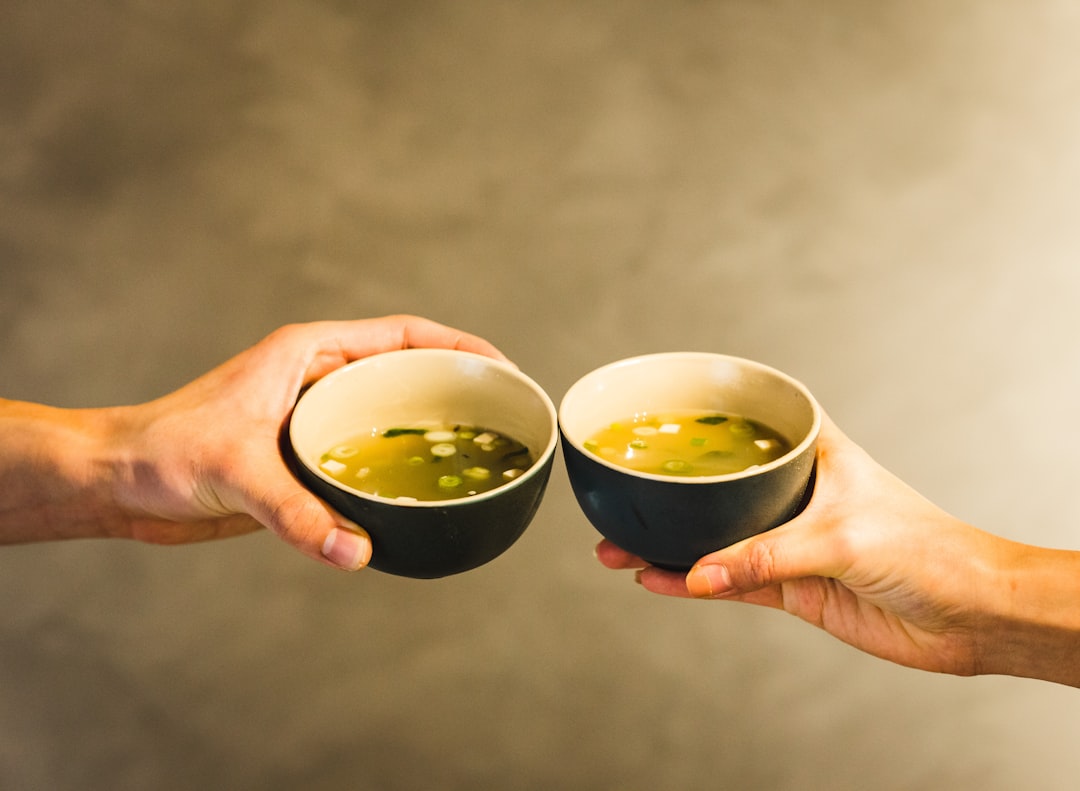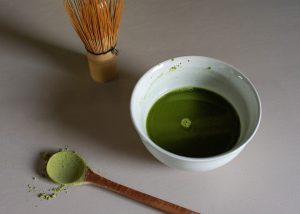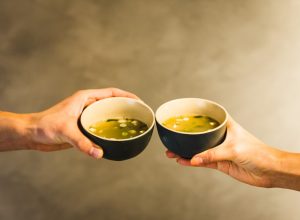Matcha vs. Green Tea: Unveiling Japanese Tea Traditions
Discover the key differences between matcha and green tea. Dive into Japanese tea traditions and enhance your tea experience today.
Origins and Cultivation
Historical Background
Both matcha and green tea have their roots in ancient China, where tea cultivation began over 2,000 years ago. However, it was in Japan where matcha, a powdered form of green tea, gained prominence.
The practice of drinking powdered tea was popularized by Zen Buddhist monks in the 12th century, who valued it for its meditative qualities and health benefits.
Green tea, in its various forms, spread across Asia and eventually the world, becoming a staple in many cultures. While both matcha and green tea share a common origin, their cultivation and processing methods diverged significantly over time.
Cultivation Techniques
The cultivation of matcha involves a unique shading process.
Approximately three weeks before harvest, tea plants designated for matcha are covered to reduce sunlight exposure. This shading increases chlorophyll levels, giving matcha its vibrant green color and enhancing the production of amino acids, particularly L-theanine, which contributes to its distinct flavor and health benefits.
In contrast, traditional green tea is grown under full sunlight.
This exposure results in a different chemical composition, affecting both the flavor and nutritional profile. The leaves are typically harvested, quickly steamed or pan-fired to prevent oxidation, and then dried.
This process preserves the natural green color and fresh flavor of the tea.
Processing Differences
After harvesting, matcha leaves undergo a meticulous process. The leaves are steamed, dried, and then deveined and destemmed, leaving only the softest parts known as tencha.
This tencha is then stone-ground into a fine powder, creating matcha. This labor-intensive process ensures a high-quality product, as the entire leaf is consumed, maximizing nutrient intake.
Green tea leaves, on the other hand, are rolled and shaped into various forms depending on the desired type, such as sencha or gyokuro.
The rolling process helps to release essential oils, enhancing the tea’s aroma and flavor. Unlike matcha, green tea is typically steeped in water, and the leaves are discarded after brewing.
Processing Methods
Matcha
Matcha is a finely ground powder made from specially grown and processed green tea leaves.
The process begins several weeks before harvest, when the tea plants are shaded to increase chlorophyll levels and enhance the production of amino acids. This shading process gives matcha its vibrant green color and rich flavor.
Once the leaves are harvested, they are steamed to prevent oxidation, which helps to preserve their color and nutritional content.
The leaves are then dried and deveined, removing stems and veins to ensure a smooth texture. The final step involves grinding the leaves into a fine powder using traditional stone mills, which is a slow process that helps to maintain the delicate flavor and aroma of the matcha.
Green Tea
Green tea processing is less intensive compared to matcha, focusing on preserving the natural qualities of the tea leaves.
After harvesting, the leaves are quickly steamed or pan-fired to halt oxidation, which is crucial in maintaining their green color and fresh taste. This step also helps to lock in the antioxidants and other beneficial compounds found in the leaves.
Following the steaming or pan-firing process, the leaves are rolled and shaped, which can vary depending on the desired final product.
Rolling helps to release the natural oils and flavors within the leaves. Finally, the leaves are dried, which can be done through various methods such as air drying or oven drying, to reduce moisture content and stabilize the tea for storage and consumption.
Flavor Profiles and Aroma
Matcha
Matcha is renowned for its rich and complex flavor profile, which is often described as umami.
This savory taste is complemented by a natural sweetness and a hint of bitterness, creating a well-rounded and satisfying experience. The umami flavor is primarily due to the high levels of the amino acid L-theanine, which is abundant in matcha due to the shading process used during cultivation.
The aroma of matcha is equally distinctive.
It exudes a fresh, vegetal scent reminiscent of young grass or fresh spinach. This vibrant aroma is a result of the careful processing of the tea leaves, which are steamed, dried, and ground into a fine powder.
The freshness of matcha’s aroma is a key indicator of its quality, with higher-grade matcha offering a more pronounced and pleasant scent.
Green Tea
Green tea, in contrast, offers a lighter and more delicate flavor profile. It is generally less intense than matcha, with a subtle sweetness and a mild astringency.
The flavor can vary significantly depending on the specific type of green tea and its origin. For example, Japanese green teas like Sencha tend to have a grassy and slightly sweet flavor, while Chinese green teas like Dragon Well (Longjing) are known for their nutty and toasty notes.
The aroma of green tea is often described as fresh and floral, with variations depending on the tea’s processing method.
Steamed green teas, such as those from Japan, typically have a more vegetal and seaweed-like aroma, while pan-fired green teas from China may exhibit a more roasted and chestnut-like scent. The subtlety of green tea’s aroma makes it a versatile choice for those who prefer a milder sensory experience.
Health Benefits and Nutritional Value
Antioxidant Content
Both matcha and green tea are renowned for their high antioxidant content, which helps combat oxidative stress in the body.
However, matcha contains a significantly higher concentration of antioxidants, particularly catechins, due to the way it is processed and consumed. When you drink matcha, you ingest the entire leaf, leading to a more potent antioxidant intake compared to steeped green tea leaves.
Energy and Focus
Matcha provides a more sustained energy boost compared to regular green tea, owing to its higher caffeine content and the presence of L-theanine.
This amino acid promotes relaxation without drowsiness and works synergistically with caffeine to enhance focus and alertness. While green tea also contains caffeine and L-theanine, the levels are lower, resulting in a milder effect.
Weight Management
Both matcha and green tea can aid in weight management by boosting metabolism and promoting fat oxidation.
The catechins, especially EGCG (epigallocatechin gallate), play a crucial role in enhancing metabolic rate. Matcha, with its concentrated catechin content, may offer a more pronounced effect on weight loss efforts compared to green tea.
Nutritional Profile
Matcha is richer in vitamins and minerals than green tea, including vitamins A, C, and K, as well as potassium and iron.
This is because matcha uses the whole leaf, providing a more comprehensive nutrient profile. Green tea, while still nutritious, offers these nutrients in lesser amounts due to the infusion process, where the leaves are discarded after brewing.
Detoxification and Immune Support
Chlorophyll, the pigment responsible for the green color in both matcha and green tea, is known for its detoxifying properties.
Matcha, with its higher chlorophyll content, may offer enhanced detoxification benefits. Additionally, the antioxidants and vitamins present in both beverages contribute to immune system support, helping to protect against infections and diseases.
FAQ
Q1: Is there a difference in the optimal steeping temperatures for matcha and green tea?
A1: Yes, there is a significant difference in the optimal steeping temperatures for matcha and green tea, which is crucial for achieving the best flavor and preserving the health benefits of each. Matcha is a powdered form of green tea made from shade-grown tea leaves, and it is not steeped in the traditional sense. Instead, it is whisked with hot water to create a frothy beverage. The ideal water temperature for matcha is around 160°F to 175°F (70°C to 80°C). Using water that is too hot can result in a bitter taste and diminish the delicate flavors. On the other hand, traditional green tea, which comes in the form of whole leaves, should be steeped at a slightly higher temperature, typically between 175°F to 185°F (80°C to 85°C). This temperature range allows the leaves to release their flavors without becoming overly bitter. It’s important to note that different varieties of green tea, such as sencha or gyokuro, may have specific temperature recommendations, so always check the guidelines for the particular type of tea you are using.
Q2: What are the varietal traits that differentiate matcha from other types of green tea?
A2: Matcha and other types of green tea, such as sencha or bancha, differ significantly in their cultivation and processing methods, which contribute to their unique varietal traits. Matcha is made from tencha leaves, which are shade-grown for several weeks before harvest. This shading process increases the chlorophyll content, resulting in a vibrant green color and a higher concentration of amino acids, particularly L-theanine, which contributes to matcha’s umami flavor and calming effects. After harvesting, the leaves are steamed, dried, and ground into a fine powder. In contrast, other green teas like sencha are grown in full sunlight, which leads to a different balance of nutrients and a more astringent flavor profile. The leaves are typically rolled and dried, rather than ground, and this processing method preserves their whole leaf structure. These differences in cultivation and processing result in matcha having a richer, creamier texture and a more complex flavor profile compared to the lighter, more vegetal taste of traditional green teas.
Q3: How should matcha and green tea be stored to maintain their freshness and quality?
A3: Proper storage is essential for maintaining the freshness and quality of both matcha and green tea, as they are sensitive to light, air, and moisture. Matcha, due to its powdered form and high chlorophyll content, is particularly susceptible to oxidation and should be stored in an airtight container, preferably one that is opaque to protect it from light exposure. It is best kept in a cool, dark place, such as a refrigerator, to preserve its vibrant color and flavor. Once opened, matcha should be consumed within a few weeks to a couple of months for optimal taste. Green tea leaves, on the other hand, should also be stored in an airtight container to prevent exposure to air and moisture, which can lead to a loss of flavor and aroma. While refrigeration can help extend the shelf life of green tea, it’s not as critical as it is for matcha. However, both matcha and green tea should be kept away from strong odors, as they can absorb surrounding scents, affecting their taste. By following these storage guidelines, you can ensure that both matcha and green tea remain fresh and flavorful for as long as possible.
Takeaway
Indulge your senses and elevate your tea experience. Discover a world of exquisite tea varieties waiting to be savored. Embrace the art of traditional brewing and immerse yourself in the rich aromas and flavors that only artisanal teas can offer. Visit our online tea shop and let the tranquility of a perfectly brewed cup transport you to a place of serenity and sophistication. Explore, brew, and delight in the essence of fine teas today.
References
- The World Green Tea Association (2023) noted a 28% global increase in matcha consumption over the last 5 years.
- A study published in the Journal of Chromatography A (2019) found matcha contains 137x more EGCG than standard green tea.







Comments